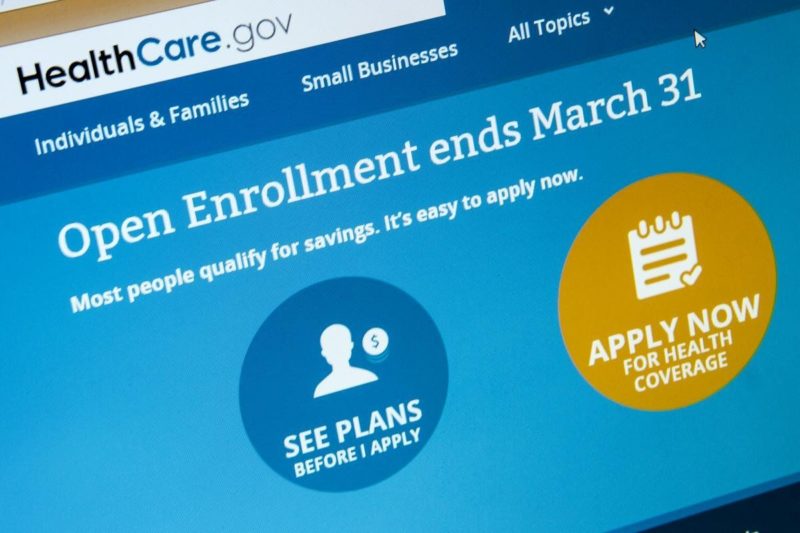Obamacare Still Falls Short for Abortion Coverage
Though Obamacare was supposed to expand reproductive health coverage, state and federal policies have continued to make it difficult for women in many states to secure abortion coverage.

The Affordable Care Act (ACA) was supposed to make reproductive health care more accessible, but long-standing federal and state policies and a wave of anti-choice state laws have made comprehensive abortion coverage a pipe dream for many women in the United States.
The ACA mandates certain reproductive health services, like contraception, in every state’s marketplace plans. But the landmark federal law left the availability of abortion coverage up to the states. Twenty-five states opted to partially or completely ban abortion coverage, either prohibiting it or limiting it to cases of rape, incest, or when the woman’s life is endangered, according to a newly released analysis by the Kaiser Family Foundation.
California is the only state that requires all private insurance plans, including individual and employer plans, to treat abortion coverage the same as it treats other maternity coverage. Washington state has tried and failed to pass similar legislation each year since the ACA, also known as Obamacare, took effect.
Every ACA marketplace is required to have at least one multi-state plan that excludes abortion coverage by 2017. A multi-state plan is a private health insurance plan sold through the ACA marketplace under a contract between the U.S. Office of Personnel Management (OPM) and an insurance company, according to HealthCare.gov. In Hawaii and Vermont, every ACA marketplace plan includes abortion coverage because there are no multi-state plans yet available.
The analysis found no recent data on the number of private plans that include abortion coverage. Some believe that the intense political scrutiny of the ACA has made it even harder for women to find plans covering abortion, as Republican state legislators and governors have fought fiercely against full implementation of the program.
“Going into the focus on abortion coverage and debate on the Affordable Care Act brought to light that [private] plans were covering abortion,” said Kelly Garcia, senior counsel for the National Women’s Law Center. The result, she told U.S. News and World Report, is that fewer private plans are now covering abortion.
Since the Hyde Amendment went into effect in 1977, federal law has prohibited the use of federal funds for abortion except in cases of rape, incest, or when the life of the woman is in danger. The law has been attached annually to congressional appropriations bills, and Congress has approved it each year.
When Democratic presidential hopeful Hillary Clinton accepted Planned Parenthood’s endorsement this month, she condemned anti-choice legislation, including the Hyde Amendment, for the burden it places on people seeking abortion care.
Any right that requires you to take extraordinary measures to access it is no right at all. Not when patients and providers have to endure harassment and intimidation just to walk into a health center. … Not when providers are required by state law to recite misleading information to women to shame and scare them. And not as long as we have laws on the book like the Hyde Amendment making it harder for low-income women to exercise their full rights.
Medicaid programs in 33 states and Washington, D.C., do not pay for abortions beyond the Hyde Amendment, according to the analysis. Seventeen states use state-only funds to pay for abortion care that falls outside of Hyde Amendment regulations for women on Medicaid.
No plan is required to cover abortion under federal law, and at least one multi-state plan in a state’s marketplace must exclude abortion. Though most states include exceptions for rape, incest, and when a woman’s like is in danger, Louisiana and Tennessee do not.
The ACA has insured many formerly uninsured Americans. One way it’s done that is through its Medicaid expansion. Under the ACA, states can opt to expand Medicaid to low-income adults with no children living at home.
But 20 states have not implemented that expansion, according to the analysis, so people in these states who don’t meet traditional Medicaid eligibility and whose incomes are below 100 percent of the federal poverty level are not eligible for Medicaid and do not qualify for marketplace subsidies. That has created a coverage gap, according to the analysis.
Some GOP governors have expanded Medicaid access after fighting against health-care accessibility for several years. Alaska Gov. Bill Walker, a Republican turned Independent, moved ahead with Medicaid expansion last summer despite protests from his state’s GOP-majority legislature.
